Driving Traffic

What is the impact of distracted driving on traffic safety ?
Distracted driving is a major concern for traffic safety, as it significantly increases the risk of accidents and injuries. This article discusses the various impacts of distracted driving on traffic safety in detail. The negative impacts of distracted driving include an increased risk of accidents, reduced reaction time, impaired judgment and perception, and difficulty maintaining lane control. Distracted driving greatly increases the risk of accidents, with approximately 3,142 deaths in the United States in 2019 being attributed to it. When drivers are distracted, their reaction time is significantly reduced, impairing their ability to respond quickly enough to avoid potential accidents. Distracted driving also impairs a driver's judgment and perception, making it difficult for them to notice important cues such as traffic signals or pedestrian crossings. Finally, distracted driving can make it difficult for drivers to maintain lane control, potentially leading to head-on collisions or single-vehicle accidents. In conclusion, distracted driving has a significant negative impact on traffic safety. To ensure safer roads for everyone, it is essential that drivers avoid distractions while behind the wheel and focus solely on the task of driving.

What are the consequences of drunk driving on traffic safety ?
Drunk driving has serious consequences for traffic safety, including slowed reaction time, impaired judgment, reduced attention span, increased risk of serious injuries or fatalities, and legal consequences. It is essential to avoid driving under the influence of alcohol to ensure the safety of all road users.

What are the most common causes of traffic accidents ?
Traffic accidents are a major concern for road safety, and understanding their causes is crucial in preventing them. Here are some of the most common causes of traffic accidents: 1. Distracted Driving 2. Speeding 3. Driving Under the Influence (DUI) 4. Reckless Driving 5. Adverse Weather Conditions 6. Road Conditions 7. Mechanical Failures 8. Driver Fatigue 9. Pedestrian Errors 10. Animal Crossings

What role does driver education play in promoting traffic safety ?
Driver education is crucial for promoting traffic safety by providing essential knowledge and skills to drivers. It helps them understand the rules of the road, develop safe driving habits, and respond appropriately to various traffic situations. The different aspects of driver education that contribute to traffic safety include understanding traffic laws and regulations, developing safe driving habits, handling emergencies and hazardous situations, enhancing driving skills, and raising awareness about road safety issues. By providing drivers with the necessary knowledge, skills, and attitudes to drive safely on the roads, driver education significantly reduces accidents and improves overall road safety.

What are the primary risks associated with driving during or immediately after an earthquake ?
Driving during or immediately after an earthquake poses significant risks, including damaged roads and infrastructure, distracted drivers, increased traffic congestion, emergency response vehicles obstructions, communication disruptions, fuel shortages, and environmental hazards. It is crucial to avoid driving if possible and follow official safety protocols. If driving is necessary, stay alert and prioritize safety.

How does weather affect traffic safety ?
Weather conditions significantly impact traffic safety, with adverse weather increasing the risk of accidents. Understanding how different weather conditions affect driving abilities and taking necessary precautions are essential for ensuring safety. Rain, snow, ice, fog, and wind all pose unique challenges to drivers, such as reduced visibility and slippery roads. To drive safely in these conditions, maintain vehicle readiness through regular maintenance and adjust driving habits by slowing down and increasing following distance. Additionally, being prepared for emergencies with an emergency kit and planning your route can further enhance safety. By prioritizing safety and adapting to weather conditions, drivers can significantly reduce the likelihood of accidents and ensure safer journeys for everyone on the road.

How do speed limits affect traffic safety ?
Speed limits are crucial components of traffic safety. They serve as a tool to control the speed of vehicles on the road, thereby reducing the risk of accidents and fatalities. In this article, we will discuss how speed limits affect traffic safety in detail. Importance of Speed Limits: - Reduced Accident Severity - Improved Driver Reaction Time - Reduced Congestion Impact of Speed Limits on Traffic Safety: - Reduction in Fatalities - Decreased Risk of Injury - Increased Compliance with Traffic Laws

How do I find cycling routes that avoid traffic ?
Cycling is a great way to exercise and explore, but sharing the road with vehicles can be dangerous. To ensure a safe ride, it's important to find cycling routes that avoid traffic. Some tips include using online mapping tools like Google Maps or Strava, checking with local cycling groups, looking for dedicated bike infrastructure, and planning your route ahead of time. By following these steps, you can enjoy a safe and enjoyable ride without worrying about traffic.

How can technology help improve traffic safety ?
Traffic safety can be improved through the use of technology such as autonomous vehicles, advanced driver assistance systems, connected vehicles, smart infrastructure, and augmented reality head-up displays. These technologies aim to reduce human error and distractions while driving, provide real-time information about traffic conditions and road hazards, and create a safer transportation ecosystem for all users.

What are some alternatives to driving solo for commuting ?
Driving solo to work can be a convenient option, but it also contributes to traffic congestion and air pollution. Here are some alternatives that you can consider for your daily commute: Public transportation is an excellent option for those who live in urban areas with well-developed transit systems. It includes buses, trains, subways, and trams. Taking public transportation has several benefits, including reduced costs, less stressful commutes, and environmentally friendly practices. Carpooling involves sharing a vehicle with others who have similar travel routes or schedules. This option can save money on gas and reduce wear and tear on your vehicle. Additionally, carpooling can provide social benefits as you get to know your fellow commuters. Biking or walking might be good options if your workplace is within a reasonable distance. These modes of transportation offer health benefits, cost-effectiveness, and low impact on the environment. Telecommuting, or working from home, has become increasingly popular due to advancements in technology and changing workplace norms. If your job allows it, telecommuting can eliminate the need for commuting altogether. Some benefits include increased productivity, flexibility, and reduced stress. Electric scooters or motorcycles can be a fast and efficient way to get around without contributing significantly to air pollution. They offer advantages such as speed, economical operation, and easy parking. By considering these alternatives to driving solo, you not only help reduce traffic congestion and environmental impact but also potentially improve your quality of life by saving money, reducing stress, and enhancing your physical health.

What is the driving range of a Series Hybrid Electric Vehicle ?
The driving range of a Series Hybrid Electric Vehicle (SHEV) is influenced by factors such as battery pack size, electric motor efficiency, and vehicle weight. Most SHEVs have a combined driving range of around 30-50 miles per gallon equivalent (MPGe), but actual range may vary due to factors like driving conditions and use of accessories. Proper maintenance and consideration of these factors can help maximize the fuel efficiency and environmental benefits of a SHEV.

What are some practical tips for teaching road safety to children ?
Teaching road safety to children is crucial for their well-being. Start by talking about traffic signals, pedestrian crossings, and the importance of looking both ways before crossing. Use visual aids like books, videos, and games to make learning fun. Practice what you've taught in real-life situations, such as crossing the street or role-playing different scenarios. Set a good example by following traffic rules yourself and avoiding distractions. By doing so, you'll help your child develop good habits that will keep them safe on the road.

What is the range of a typical electric car ?
The range of an electric car refers to the distance it can travel on a full charge, which varies depending on factors such as battery size, energy efficiency, driving conditions, climate control, and tire pressure. Typical ranges for city driving are around 100-150 miles, while highway driving ranges are typically around 70-100 miles. For a mix of city and highway driving, most electric cars have a range of around 80-120 miles.

What is the range of a parallel hybrid electric vehicle (PHEV) ?
The range of a parallel hybrid electric vehicle (PHEV) depends on several factors, including battery size, driving habits, road conditions, and fuel economy. Larger batteries provide longer ranges, while smaller batteries offer shorter ranges. Driving habits also play a significant role in determining the range of a PHEV. Road conditions can affect the efficiency of both the internal combustion engine and electric motor, leading to lower overall range. The combined range of a PHEV typically falls within the range of 300-600 miles, depending on the model and driving conditions.
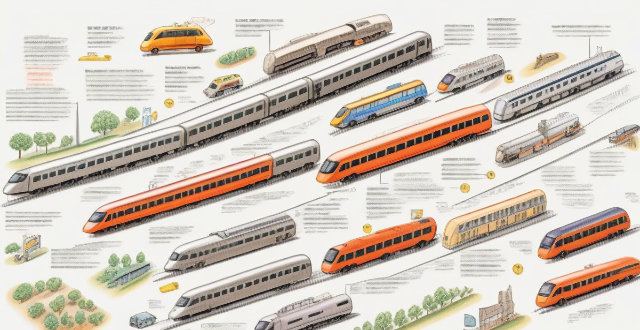
How does an integrated transportation system reduce traffic congestion ?
Integrated transportation systems reduce traffic congestion by promoting diverse modes of travel like public transit, biking, walking, and carpooling. These systems also improve traffic management through smart controls, congestion pricing, and dedicated high-occupancy vehicle lanes. Land use planning, such as mixed-use developments and compact cities, reduces the need for long-distance travel. Intelligent Transport Systems (ITS) provide real-time information and future advancements like autonomous vehicles could optimize traffic flow. Educational campaigns and Travel Demand Management strategies influence behavior towards efficient transport modes. Infrastructure investments in improved roads and intermodal facilities enhance overall transport efficiency. This multifaceted approach results in a more efficient and flexible transportation network that distributes traffic across various modes, reducing road congestion.
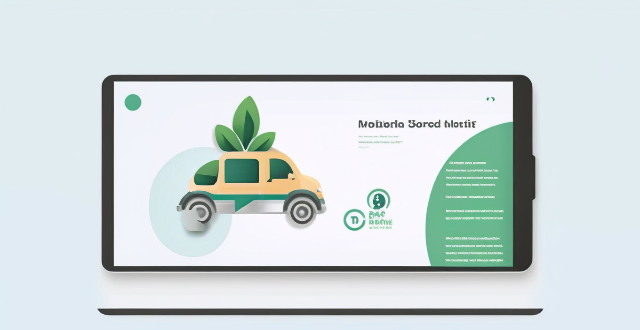
How can I use social media to drive traffic to my website ?
Social media is a powerful tool that can be used to drive traffic to your website. Here are some tips on how to use social media effectively: create quality content, share your content on social media, engage with your audience, use paid advertising, and collaborate with influencers. By following these tips, you can increase your website's visibility and attract more visitors.

How can pedestrian and cyclist safety be improved in urban areas ?
Improving the safety of pedestrians and cyclists in urban areas is crucial due to high traffic volume. A multifaceted approach involving infrastructure changes, legislation, education, and technology can enhance their safety. Infrastructure improvements include dedicated paths and lanes, safety features like crosswalks and signals, and clear signage and road markings. Legislation and enforcement involve traffic laws, speed limits, bike helmet laws, ticketing, and awareness campaigns. Education and awareness focus on public campaigns, school programs, teaching traffic rules, and bike safety courses. Technology and innovation encompass smart infrastructure, traffic sensors, interactive crossings, wearable technology, and app-based safety tools. Community involvement includes local advocacy groups, community watch programs, public surveys, and town hall meetings. Implementing these measures can make urban areas safer for pedestrians and cyclists, enhancing the quality of life and sustainability of city living.

Do all international airports have duty-free shops ?
Duty-free shops are not present at all international airports, and their existence depends on factors like airport size, passenger traffic, regulatory requirements, economic considerations, and the availability of local goods. While larger airports with high passenger traffic are more likely to have duty-free shops, smaller airports or those in countries with strict regulations may not. Travelers should be aware that they may not find duty-free shops at every international airport they visit.

What are the benefits of autonomous vehicles for transportation ?
Autonomous vehicles, also known as self-driving cars, have the potential to revolutionize transportation by improving safety, efficiency, and accessibility. Here are some of the benefits they offer: ### Improved Safety - **Reduced Accidents**: Autonomous vehicles can significantly reduce the number of accidents caused by human error, such as distracted driving, drunk driving, and fatigued driving. - **Better Reaction Times**: Self-driving cars can react faster to unexpected situations than humans, potentially preventing accidents. - **Predictive Analysis**: Autonomous vehicles use advanced sensors and algorithms to predict potential hazards and take appropriate actions to avoid them. ### Increased Efficiency - **Optimized Traffic Flow**: Autonomous vehicles can communicate with each other and traffic infrastructure to optimize traffic flow, reducing congestion and travel times. - **Less Idling**: Self-driving cars can reduce idling time at traffic lights and in congested areas, improving fuel efficiency and reducing emissions. - **Dynamic Routing**: Autonomous vehicles can choose the most efficient route based on real-time traffic data, saving time and energy. ### Enhanced Accessibility - **Mobility for All**: Self-driving cars can provide transportation for people who are unable to drive, such as the elderly, disabled, and young children. - **On-Demand Services**: Autonomous vehicles can offer on-demand transportation services, reducing the need for personal car ownership and making it easier for people to access transportation. - **Reduced Parking Demand**: With autonomous vehicles, there will be less need for parking spaces, freeing up valuable urban space for other uses. ### Environmental Benefits - **Reduced Emissions**: Autonomous vehicles can help reduce greenhouse gas emissions by improving fuel efficiency and reducing congestion. - **Electric Vehicles**: Many autonomous vehicles are expected to be electric, further reducing emissions and improving air quality. - **Sustainable Urban Planning**: The reduced need for parking spaces and improved traffic flow can lead to more sustainable urban planning and development. ### Economic Benefits - **Cost Savings**: By reducing the number of accidents and improving traffic flow, autonomous vehicles can save money in healthcare, insurance, and infrastructure costs. - **Job Creation**: The development and maintenance of autonomous vehicle technology will create new job opportunities in engineering, software development, and other fields. - **Increased Productivity**: With the ability to work or relax during commutes, autonomous vehicles can increase productivity and improve quality of life.

What are the environmental impacts of driving an electric car ?
Driving an electric car can have a range of environmental impacts, both positive and negative. Some key factors to consider include reduced emissions, battery production and disposal, and energy sources. Electric cars produce zero tailpipe emissions, which can help improve air quality and reduce respiratory problems caused by vehicle emissions. Depending on how the electricity used to charge the car is generated, electric cars can also have a lower carbon footprint than traditional vehicles. However, the production of lithium-ion batteries for electric cars requires large amounts of energy and raw materials, which can have significant environmental impacts. At the end of their lifespan, batteries must be disposed of properly to prevent harmful chemicals from leaking into the environment. The environmental benefits of driving an electric car depend largely on where the electricity comes from. If it's generated by burning coal or other fossil fuels, the reduction in emissions may not be as significant as if it comes from renewable sources. As more people switch to electric cars, there will be increased demand for electricity, which could put a strain on power grids and lead to increased energy production. By addressing these challenges and continuing to develop cleaner energy solutions, we can maximize the environmental benefits of electric cars.
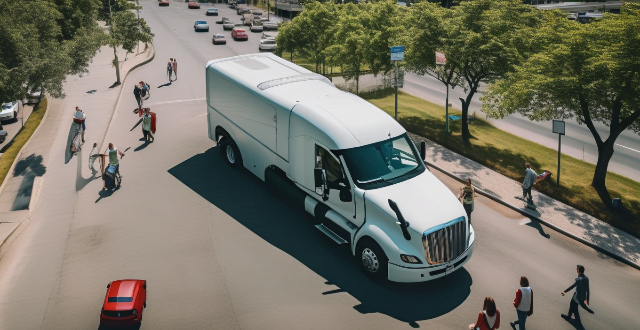
How will autonomous vehicles change our daily commutes ?
Autonomous vehicles will revolutionize daily commutes, reducing traffic congestion, improving safety, increasing productivity, and offering environmental benefits. They also provide accessibility for seniors and people with disabilities.
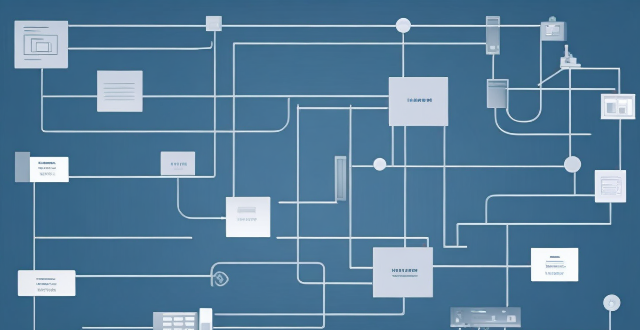
Can you explain the function of a network switch in a home network setup ?
The article discusses the function of a network switch in a home network setup. The primary function of a network switch is to connect multiple devices together, either through Ethernet cables or wireless connections. It also manages data traffic within the network by forwarding data packets to their intended destination based on their IP address. Additionally, network switches enhance network performance by providing dedicated bandwidth to each connected device and prioritizing certain types of traffic over others. Finally, network switches come with various security features that help protect your home network from unauthorized access and cyber threats.

How can we improve road safety in our community ?
Road safety is a crucial aspect that requires collective efforts from all stakeholders. Here are some ways to enhance road safety: education and awareness, infrastructure improvements, enforcement of laws, technological advancements, community involvement, and collaboration with stakeholders. By implementing these strategies, we can create a safer environment for everyone.

Can you drive a parallel hybrid electric vehicle (PHEV) on electricity alone ?
This article discusses the capabilities of parallel hybrid electric vehicles (PHEVs) and their ability to operate solely on electricity. It explains that PHEVs have an electric-only mode that allows them to drive without using the internal combustion engine, but this mode is typically limited to lower speeds and lighter load conditions. The article also highlights the benefits of electric-only driving, such as reduced emissions, quieter operation, and improved fuel efficiency. However, it notes that several factors can affect the electric-only range of a PHEV, including battery size, driving conditions, vehicle load, and tire pressure. Overall, the article emphasizes the importance of understanding your PHEV's capabilities and limitations to maximize its potential for eco-friendly driving.

How does a Series Hybrid Electric Vehicle compare to a Parallel Hybrid Electric Vehicle ?
Comparison between Series Hybrid Electric Vehicle and Parallel Hybrid Electric Vehicle highlights the differences in power transmission, battery dependency, fuel efficiency, performance, cost, complexity, and regenerative braking capabilities of both types. The series hybrid is more efficient for city driving, while the parallel hybrid suits highway driving better. The choice depends on the user's driving habits and needs, with both offering environmental and economic benefits over traditional vehicles.

Are there any health risks associated with wearing a fitness tracker ?
The article discusses potential health risks associated with wearing fitness trackers, including radiation exposure, skin irritation and allergies, and distracted driving. It provides tips on how to minimize these risks, such as limiting exposure time, choosing low-power modes, using hypoallergenic materials, adjusting the fit properly, giving skin regular breaks, turning off non-essential features before driving, using Do Not Disturb mode, and putting the phone away while driving.
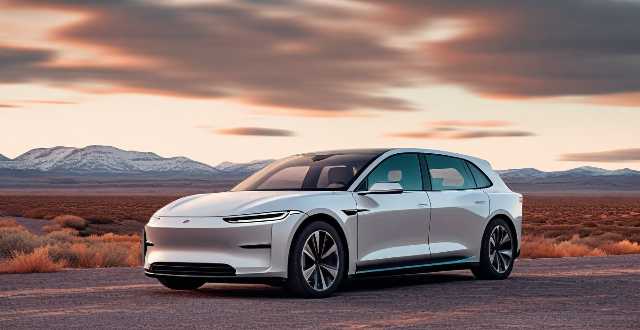
What is the range of an electric car ?
The range of an electric car, or the distance it can travel on a single charge, depends on factors such as battery size, driving conditions, and energy efficiency. Larger batteries generally provide longer ranges, but they also increase weight and cost. Driving at high speeds, in cold weather, or uphill can reduce range, while efficient powertrain systems use less energy for propulsion. The average range of electric cars is increasing over time, with many offering between 150-300 miles per charge under ideal conditions. Some high-end models boast even greater ranges, exceeding 400 miles on a single charge.
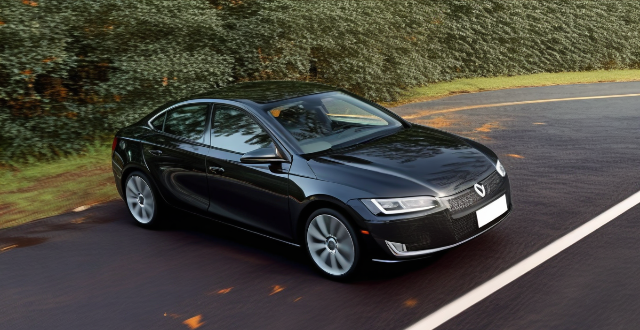
How far can a gasoline hybrid car travel on a full tank of gas ?
The text discusses the fuel efficiency and range of gasoline hybrid cars on a full tank of gas. Factors affecting fuel efficiency include driving habits, traffic conditions, vehicle maintenance, and weather conditions. Gasoline hybrid cars typically have higher fuel efficiency ratings than traditional gasoline-powered cars due to their combination of an electric motor and a gasoline engine. The estimated range of many gasoline hybrid cars is around 300-500 miles on a full tank of gas, with some having larger fuel tanks or higher fuel efficiency ratings allowing for greater ranges. Maximizing fuel efficiency can be achieved by considering factors such as driving habits and vehicle maintenance.